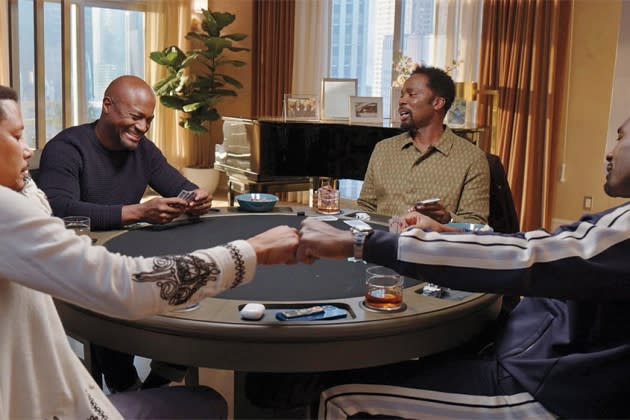How ‘The Best Man: Final Chapters’ Team Overcame Logistical Challenges: We Worried It Was a ‘Disaster’
- Oops!Something went wrong.Please try again later.
- Oops!Something went wrong.Please try again later.

As with extreme stunts, a la the Marvel franchise, it’s easiest for awards season voters to recognize that which is blatant, leaving other projects struggling to gain a foothold.
With “The Best Man: The Final Chapters” comes the culmination of a story more than two decades in the making. The journey through multiple movies to Peacock’s current limited series allow a feature film’s worth of main characters to find closure.
More from Variety
As with all productions, the series had a slew of challenges. A scene aboard a beautiful yacht in the Dominican Republic put the team to the test when the floating location’s mechanical problems put it out of commission the day before a 5:30 a.m. crew call.
While there may be yachts in a harbor, it doesn’t mean wealthy owners want to rent them to a production. So securing another one at the last minute wasn’t as easy as pulling out a checkbook. Franchise creator, writer and director Malcolm D. Lee and director of photography Greg Gardiner stayed outwardly calm while a new yacht was secured, this one an hour and a half away.
With three cameras scheduled for the day — one on board, one to shoot boat-to-boat and a third in the water — logistics were essential. Add to that the increasingly choppy water and intermittently functioning walkie talkies and there was no room for error.
The shoot had to be far enough out that cameras wouldn’t pick up land in the background, and amid increasing swells, the cast and crew turned euphemistically green. (If only that’s where it had stopped.)
“We’re all worried it’s a disaster at this point,” says Gardiner. “We don’t have a party, we haven’t shot any of the actual fun stuff.”
But he wasn’t ready to pack it in; heading back to the harbor left him a narrow window of opportunity to secure Lee’s vision.
“‘Malcolm wants everyone to party,’” announced Gardiner, who picked up the camera and began shooting handheld until the last possible second.
“There were a lot of people and not ideal circumstances in so many ways,” reflects Lee of the situation, “but [Greg] knew I wanted these moment[s] on the yacht.”
Ultimately: success. Lee refers to the trust he has for Gardiner as “infinite,” thanks to a relationship 15 years strong; the feelings are mutual.
The series “has a great observing quality,” Gardiner says of the series’ style, achieved in part through proper lighting so he could give the actors space to live in the scenes and let the camera linger on shots. “It certainly has cutting, but it’s not very cut-y.”
Lee adds that they wanted to shoot cinematically and “have richness of skin tones and textures of wardrobe and settings.”
But the challenges weren’t limited to the water.
One scene in a New Jersey park found the team with proper permits, but without permission to actually cordon off an area for their work and equipment. Cool heads prevailed and the actors never noticed as they followed instructions to run lines on a public park bench while work-arounds were brainstormed within the team.
The result? Gardiner says that Harold Perrineau (who plays Julian on the series) gave one of his favorite performances that day.
For all the production value and relatability of themes — including raising children, aging parents and nurturing (all) relationships — getting voting eyeballs on the content isn’t always easy.
“There’s this separation between a ‘Black show’ and everything else,” reflects Lee. Add to that, a cast that includes Oscar nominee Terrence Howard as well as Regina Hall, Taye Diggs and Sanaa Lathan, and it may be time for voters to broaden their vision.
Best of Variety
Sign up for Variety’s Newsletter. For the latest news, follow us on Facebook, Twitter, and Instagram.